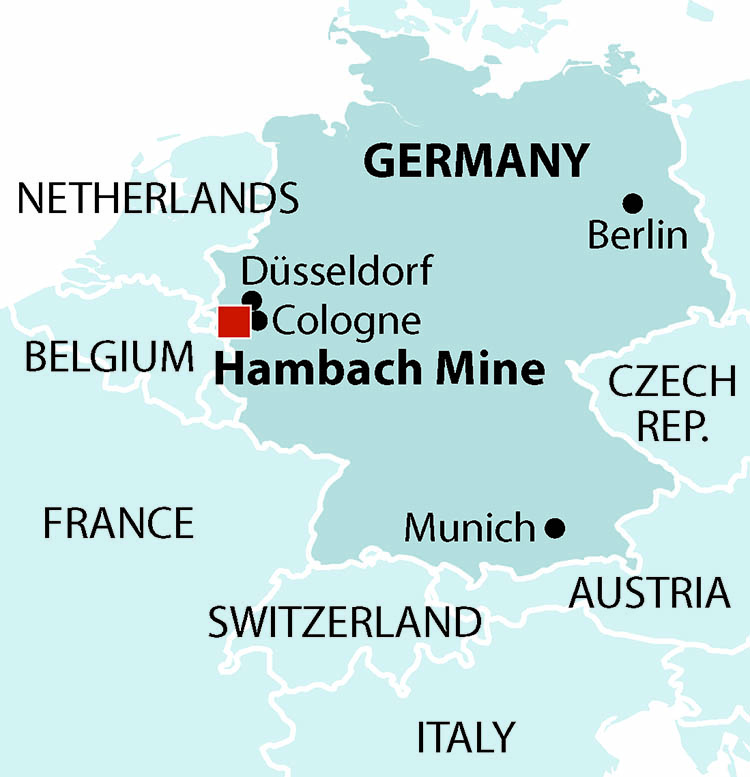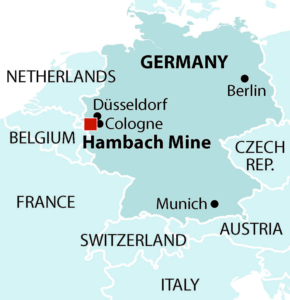
 Oct 23, 2018, LONDON (IEEFA) – In a report released today, the Institute for Energy Economics and Financial Analysis finds that German utility RWE would benefit in the medium to long term by moving now to sharply reduce its lignite mining activities and begin closing its oldest lignite-fuelled generation stations.
Oct 23, 2018, LONDON (IEEFA) – In a report released today, the Institute for Energy Economics and Financial Analysis finds that German utility RWE would benefit in the medium to long term by moving now to sharply reduce its lignite mining activities and begin closing its oldest lignite-fuelled generation stations.
The report, “Lignite Retreat: RWE’s Short-Term Pain, Long-Term Gain,” finds that RWE could save at least $100 million in avoided capital expenditures by deciding not to extend the life of ageing, marginal power plants. Such a move would also significantly reduce the utility’s carbon dioxide emissions and speed its corporate makeover into a renewable energy generation major.
“It does not make sense to invest funds to extend the life of marginally profitable power plants that are nearly 50 years old, as RWE is planning, to comply with emissions standards that come into force in 2021,” said report co-author Gerard Wynn. “This is especially true since Germany’s Coal Exit Commission is on the verge of announcing a national coal phaseout date.”
The report examines the controversy surrounding RWE’s plans to expand its Hambach mine, which has sparked significant protest in Germany and is now on hold pending the outcome of a court case. Specifically, Wynn and co-author Paolo Coghe study one potential option for RWE, which would involve cutting its lignite production in half at Hambach and the neighbouring Garzweiler mine and closing a number of its oldest power plants.
In the short term, this could cut company profits due to foregone electricity sales. But in the medium to long-term such a move would be fiscally prudent, the authors concluded.
RWE will be one of the energy companies most affected by an expected coal phaseout in Germany because of its substantial lignite and hard coal assets, which account for some 60% of its installed capacity.
“RWE’s Niederaussem and Neurath power plants are only marginally profitable under central scenarios from around 2022,” said report co-author Paolo Coghe. “Factoring in the age of these power plants, and the extra investment required to meet environmental upgrades, we are unconvinced of a significant net cashflow benefit from continuing to operate older units.”
“Sharply lowering lignite production may indeed be a painful transition for RWE, especially as the economics of its wider mining operation may not then stack up. But the question for RWE is, how long does it intend to continue mining at scale for diminishing returns?”
The report’s main findings:
- Halving of lignite output is equivalent to removing about 3.3 gigawatts (GW) of local power generating capacity. By selecting older, less profitable generation, however, these closures could be limited to power plants with an average of 46 years, leaving remaining generation with an average age of 18 years.
- Halving output would avoid at least $100 million in capital expenditures required to meet pollution limits that come into force in 2021. All but one of RWE’s 11 local generation units presently exceed those limits. The report estimates environmental upgrades at all of RWEs lignite units in North-Rhine Westphalia could cost $200-600 million.
- The risk associated with these capital expenditures is magnified when central power and carbon price scenarios are examined. These scenarios indicate that the two main local power plants, Niederaussem and Neurath, will be only marginally profitable from the early 2020s. The forward curve for wholesale power presently sees price reductions through 2021, in contrast with rising carbon prices. Environmental upgrades will reduce power plant availability through 2021 and add to operating costs thereafter.
- Closing the mine could supercharge a strategic repositioning that RWE is already starting through the prospective acquisition of E.ON’s renewable infrastructure assets. Halving of lignite output could increase the prospect for a significantly higher environmental social governance (ESG) score, where RWE historically has performed at the bottom of utility league tables. In particular, it would avoid about 26 million tonnes of carbon dioxide emissions annually and reduce other health and social costs—factors that almost certainly would lead to an increase in RWE’s ESG ranking.
Full report here: Lignite Retreat: RWE’s Short-Term Pain, Long-Term Gain
Media:
(Europe) Gerard Wynn, [email protected], +44 7990 560 525
(U.S.) Karl Cates, [email protected], +1 917-439-8225
________________
About IEEFA:
The Institute for Energy Economics and Financial Analysis (IEEFA) conducts global research and analyses on financial and economic issues related to energy and the environment. The Institute’s mission is to accelerate the transition to a diverse, sustainable and profitable energy economy.










